Shakti Pith #23: Varanasi’s Vishalakshi Mandir and Manikarnika Kund
In a narrow lane near Varanasi’s Meer Ghat is a small, curiously South Indian-styled temple dedicated to the goddess known as Vishalakshi–the “Wide-Eyed.”
At first, this temple might be easy to overlook if it weren’t for the elaborate gopuram (ornamented tower) which rests above the main entrance. Upon closer inspection, one finds lions flanking a door above which is a lovely marble relief depicting the popular goddess, Lakshmi. Here she sits upon a lotus with elephants on opposite sides pouring water over her, forming a composite glyph that represents abundance. This popular representation of the goddess is known as Gajalakshmi.
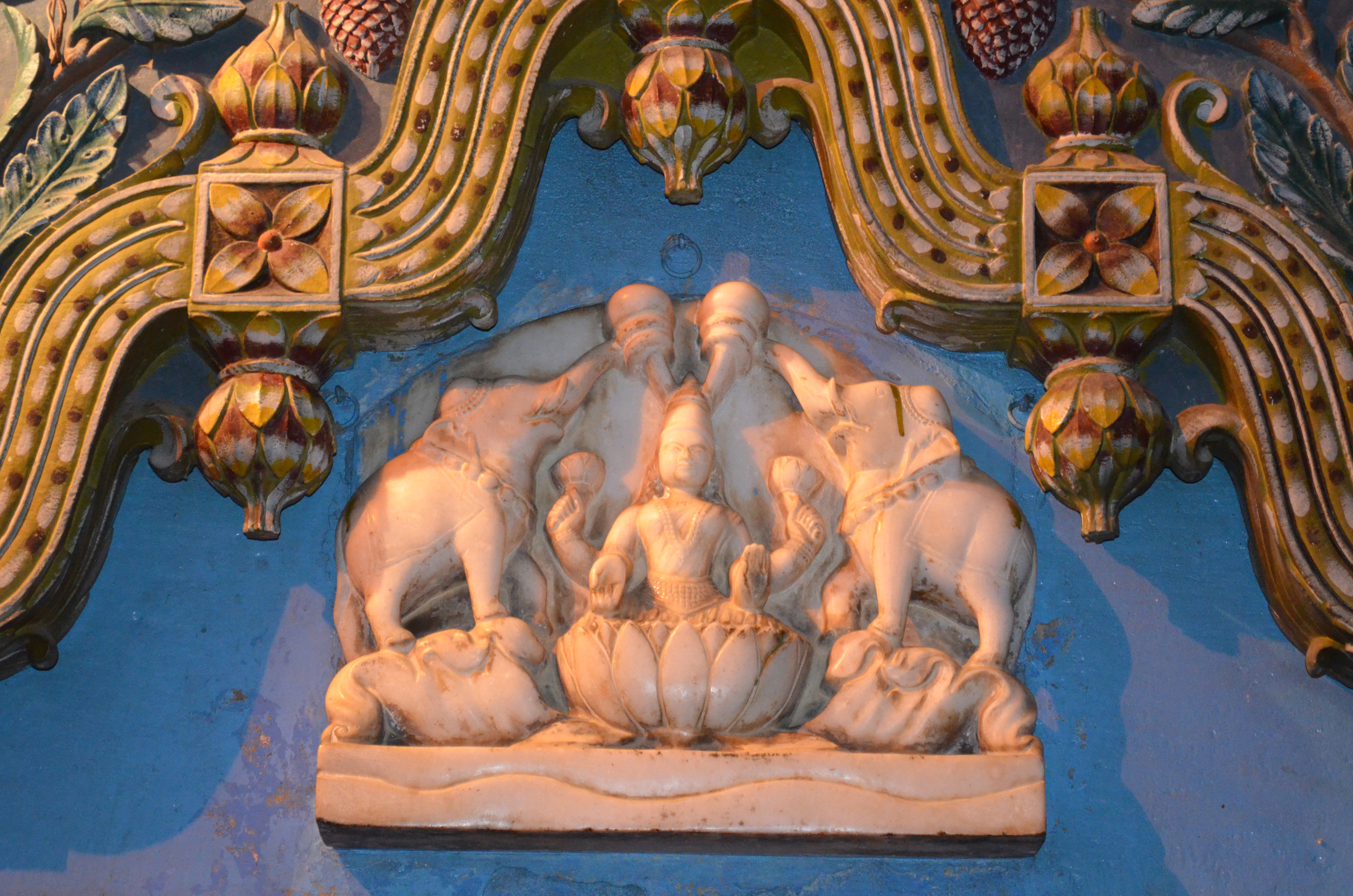
After removing your footwear (always the case with any Hindu temple, or Indian home), you enter the temple, stepping upon the cool, black and white marble tiles, arranged like a chess board, to circumambulate the main shrine which houses the goddess’ sacred image, or murti.
The inner periphery of the temple is essentially a concrete wall that has an area which protrudes like a shelf displaying an assortment of Shiva lingams (some with an accompanying Nandi–Shiva’s bull), nagas (divine serpents), and a beautiful Ganesh sculpture. Directly behind the main shrine and opposite the door is a marble statue of Adi Shankaracharya, the famous philosopher monk, seated cross-legged.
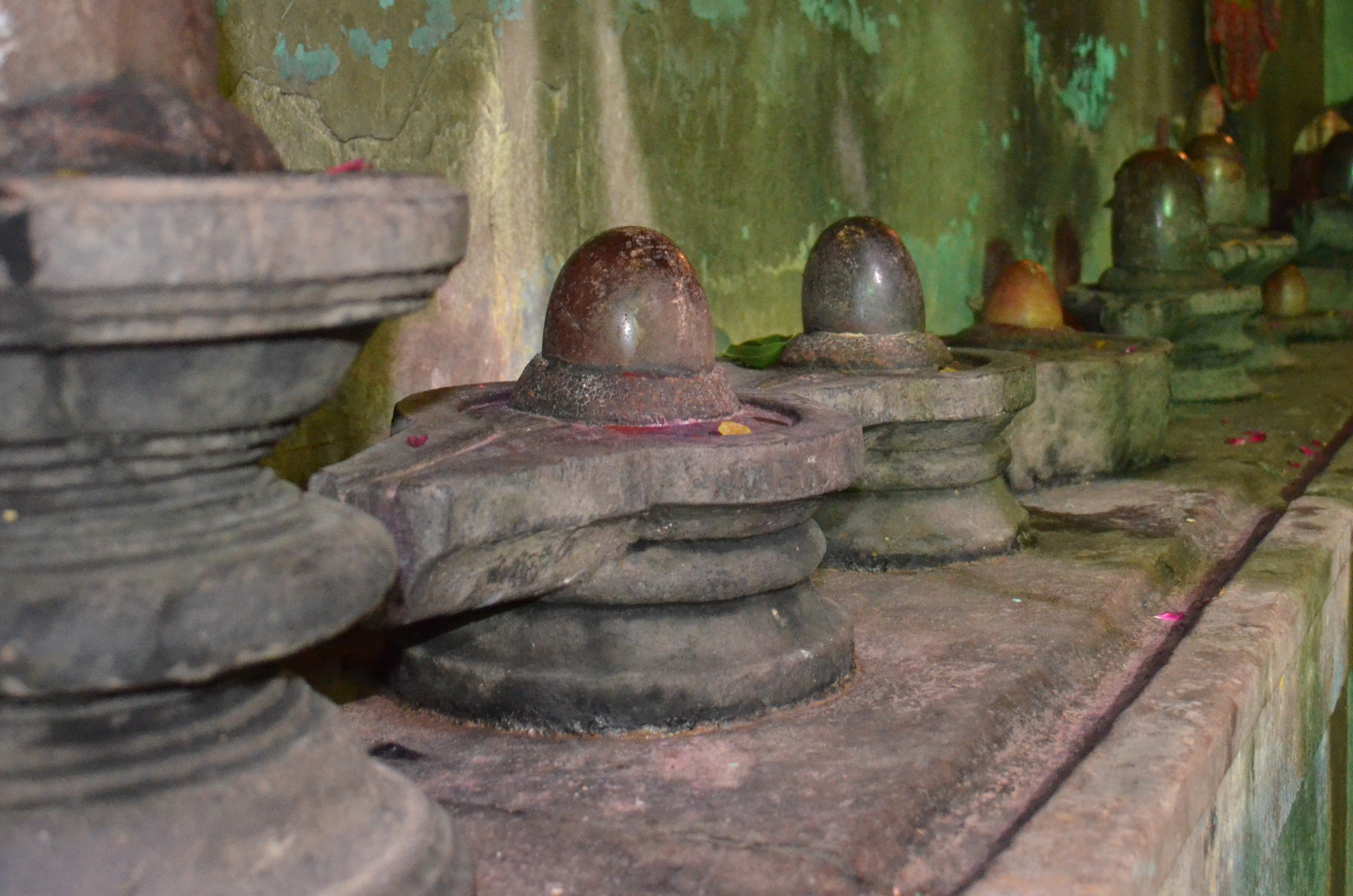
On the right side of the temple is an adjacent room which functions like a sacred storage area. It contains two gated areas which respectively house a sculpted horse and an alternative image of the goddess Vishalakshi. These are periodically brought out during special festival processions when Ma Vishalakshi, seated upon the horse, is wheeled about for a small tour of the nearby streets. Also within this room is a smaller shrine dedicated to Shiva and housing a large lingam–the abstract representation of male creative energy, or the sacred phallus. One very interesting feature of this room is an altar upon which rests nine statues depicting the planetary deities from Vedic Astrology in anthropomorphic form: Surya (Sun), Chandra (Moon), Mangala (Mars), Budha (Mercury), Brihaspati (Jupiter), Shukra (Venus), Shani (Saturn), Rahu (Ascending/North lunar node) and Ketu (Descending/South lunar node). These representations are the focus of regular adoration in the form of flower and leaf offerings as well as being marked with bright vermilion powder.
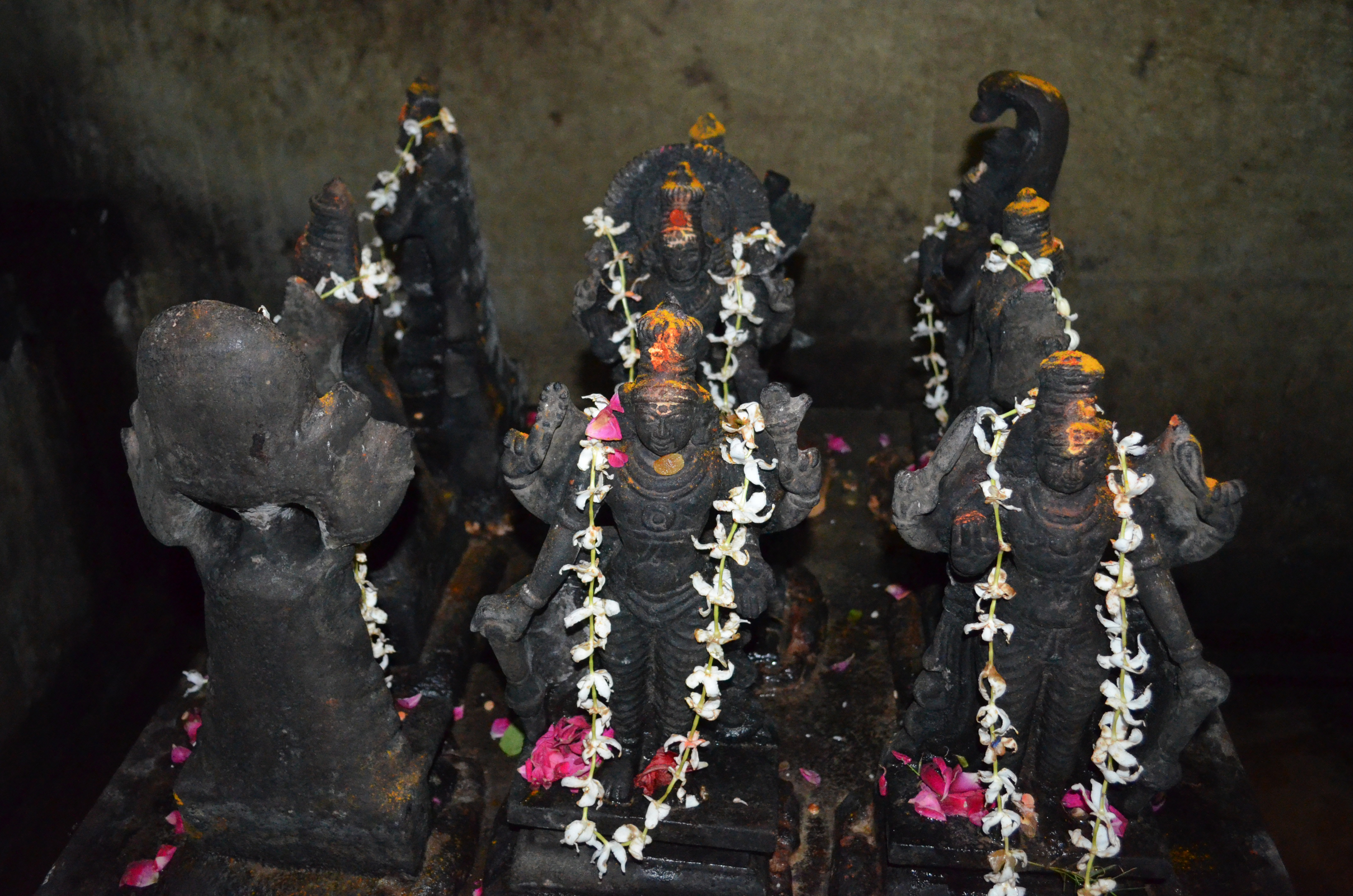
The most ornamented area inside the temple is the verandah directly in front of the main shrine. Its four concrete pillars have been painted over so much that they feel completely smooth when touched. They bare the sculpted reliefs of floral designs, yantras, and protective figures. The ceiling directly above, designed to produce a canopy-like effect, is painted with a grid of 12 squares each containing a different image from a zodiacal house. Above the main shrine we find a scene that would be immediately recognizable to people from Tamil Nadu: a high-relief depiction of Shiva and Meenakshi’s wedding. Meenakshi (the “Fish Eyed”) herself is a popular South Indian goddess and is here associated with Vishalakshi along with Kamakshi (the “Desire Eyed”), to form a triad of goddesses.
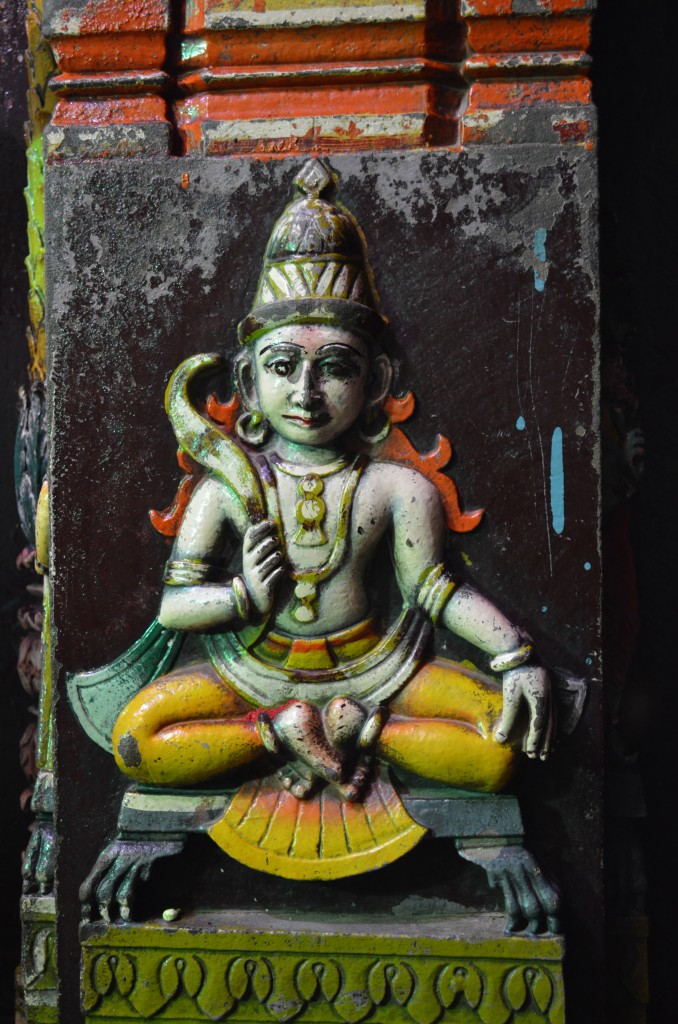
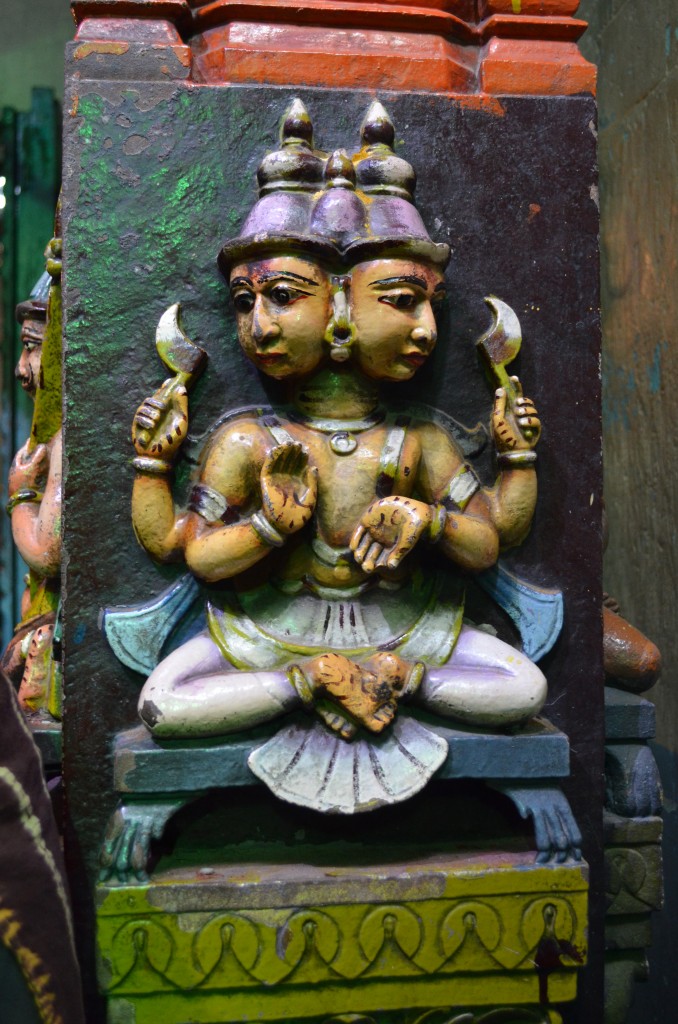
Finally we come to the main shrine and Vishalakshi’s seat proper. The sanctum sanctorum (garbhagriha in Sanskrit) contains a very ornate marble shrine which itself contains an even smaller shrine housing the image. This “nesting” of shrines produces a stacked, “Russian doll” type of effect. The original, very ancient murti and its accompanying shrine were placed in the larger shrine and temple as the current structure was quite literally built up around it.
The goddess Vishalakshi herself is represented by a lovely murti carved from a solid piece of polished black stone. Her upraised right arm bears a lotus in its hand, while the palm of her left, downturned hand is empty and facing away. She gazes directly forward and her darshan can easily be obtained from the street when the front doors are open and it is not too crowded inside the temple.
But this stone sculpture, delightful as it is, is not the original representation of Vishalakshi. It was, in fact, carved from stone in 1971 when the temple was renovated with Tamil patronage. After visiting this temple a few times, a Brahmin encouraged me to look at the goddess from the side upon which I was surprised to see another, smaller murti adorned with flowers directly behind the main image. I was then told that this is the original image of Vishalakshi as she has been worshiped for countless years. When I asked a temple Brahmin how long this original image has been worshiped he replied, “In very ancient time, in our Gods’ time… you can’t count the years.”
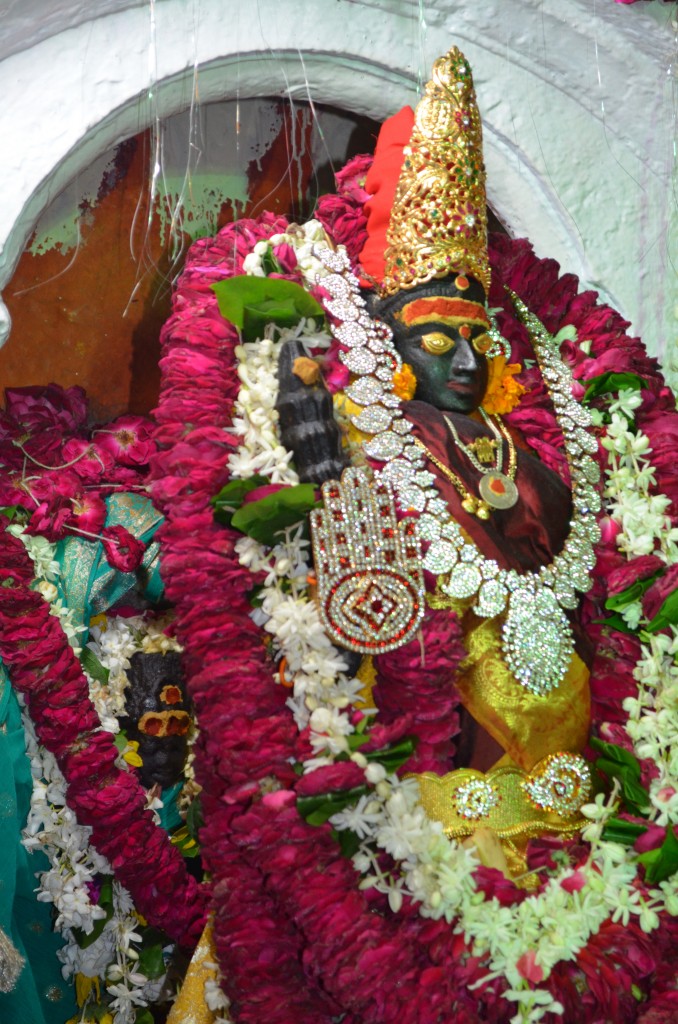
This black stone image of the goddess is svayambhu, or self-formed. Vishalakshi’s original image was not made with human hands, but is a natural rock formation that resembles a feminine form and has come to be worshiped as a self-manifested image of the goddess Vishalakshi. After asking various people associated with the temple about its origin I received different answers, but the most common was that it “came from the earth.”
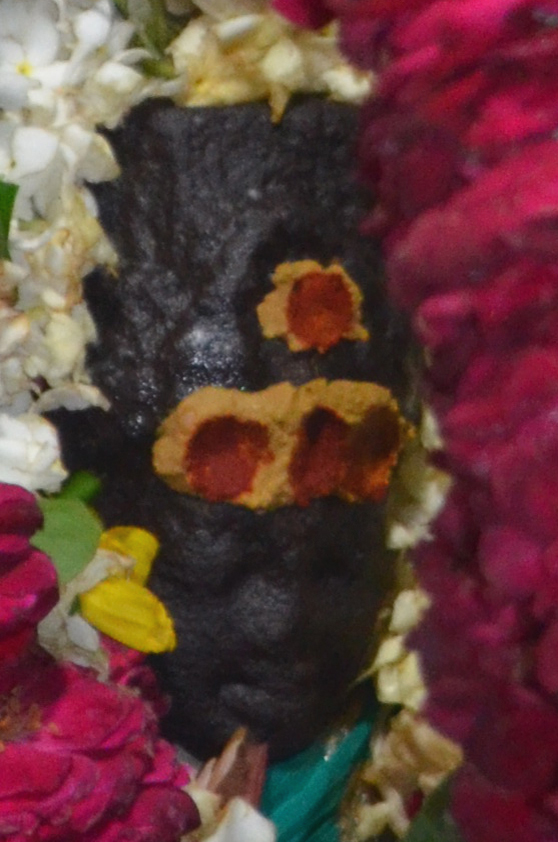
According to the medieval Tantrik scripture, the Mahapithanirupana, it was in Varanasi that the Great Goddess’ earring fell. This text gives a different location than the Vishalakshi Temple as the site of the fallen earring. The location listed is Manikarnika, but Vishalakshi is named as Varanasi’s presiding shakti pith goddess. A relationship was seen between the ornament dropped at Manikarnika and the “self-formed” image that is worshiped at the Vishalakshi Temple. It should also be noted that some sources say it was one of her eyes which landed in Varanasi–hence the name, Vishalakshi (Wide-eyed). But sticking with our model of the Mahapithanirupana, we will go with the correspondence of Ma’s earring landing in Varanasi for the time being and explore the nearby Manikarnika Kund…
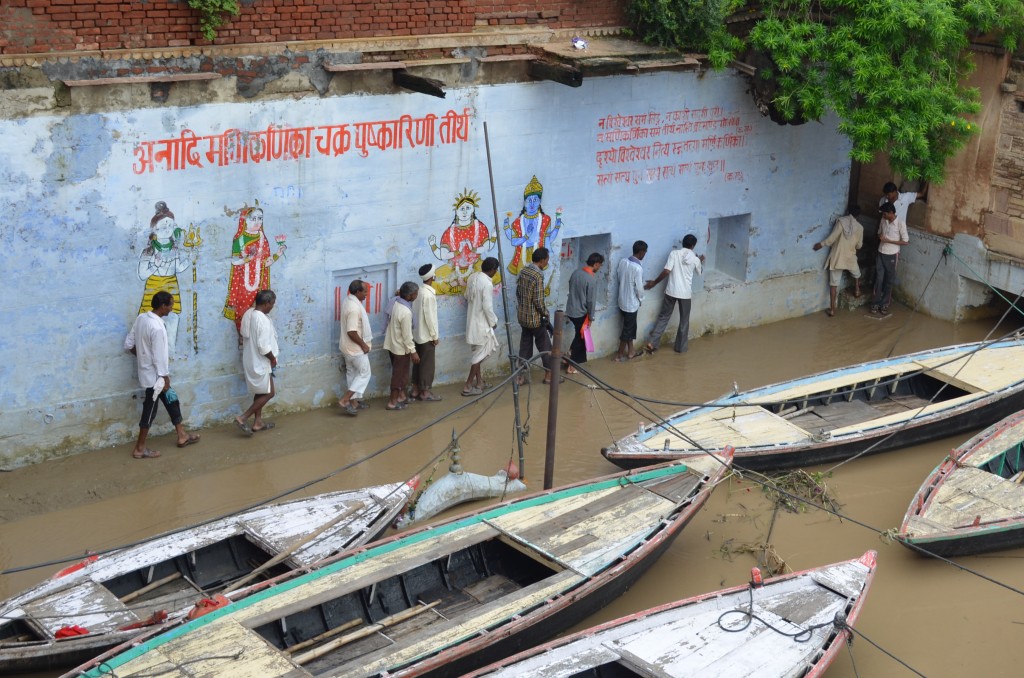
Manikarnika Kund is an ancient sacred well which is the site of several overlapping myths related to falling earrings. According to one variation, the goddess Parvati bathed in this sacred well and left behind one of her ornaments: a jeweled earring, or manikarni. It seems that the medieval Tantrik writers compiling lists of sites sacred to the goddess blended this story of Shiva’s wife losing an earring together with a local goddess’ svayambhu murti into a composite myth. The idea then develops that the goddess Sati’s earring fell to the earth at the site of Manikarnika Kund and is now actively worshipped as Vishalakshi, herself sometimes referred to as Manikarni Devi. Mythologically speaking, the self-formed, original murti of the goddess corresponds directly with the earring of Sati which fell to earth countless aeons ago. It is interesting to note that the goddess image which is worshiped as the representative of Varanasi’s shakti pith today is not located at the place where the earring fell. While the ancient textual sources claim Manikarnika to be the location of the dropped earring, modern local knowledge points to the Vishalakshi Mandir as Varanasi’s shakti pith. The Brahmins agree with this idea as does a large sign prominently displayed on the street outside the temple.
Searching for Varanasi’s shakti pith proved to be an interesting and fun journey for me. I was lucky enough to be present during a large yearly puja for Vishalakshi when the goddess is dressed in her finest and worshipped with countless flowers. On this day, she was also was decorated with a pair of piercing, golden eyes–most likely, a nod to her name. Devotees from Varanasi and abroad gathered to pay homage and the temple Brahmins, quite familiar with me at this point, encouraged me to photograph the mandir as well as the goddess’ murti. This was a unique opportunity that I eagerly embraced! Unfortunately because of the language barrier (or rather, because my Hindi is weak), I was left with a lot of questions about the evolution of Varanasi’s unique connection with the myth of the sacred shakti piths–questions that will have to remain unanswered for the time being. What can be confidently stated is that in searching out Varanasi’s shakti pith I did not find consistency. Instead, various myths associated with a sacred well, Manikarnika Kund, and the “self-formed” image of a local goddess named Vishalakshi meet with the Tantrik passion for drawing and organizing correspondences to form a new story which weaves many diverse threads into a composite whole.
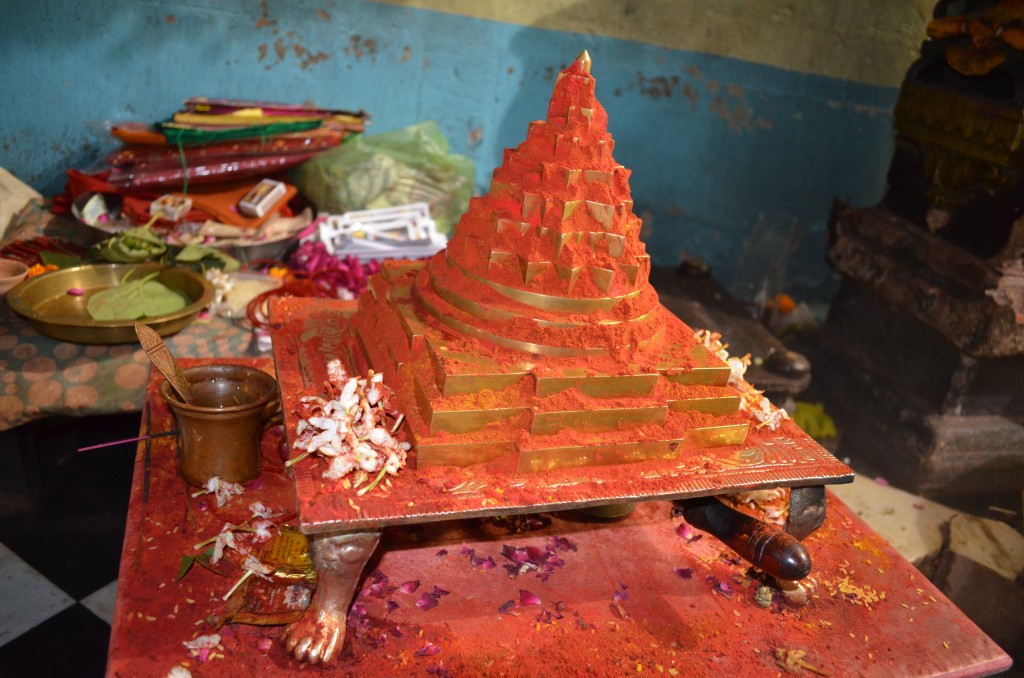
There was unfortunately very little to record at the Vishalakshi Mandir in terms of audio. For the sake of completion, I have added this short recording of bell ringing and recitation from the August 14, 2011 10 pm evening arati (fire waving) ceremony:
9 Comments
Trackbacks/Pingbacks
- Kasi Visalakshi Devi’s Wrist Varanasi Shakti Peeta | Ramani's blog - [...] http://www.kalibhakti.com/vishalakshi/ [...]

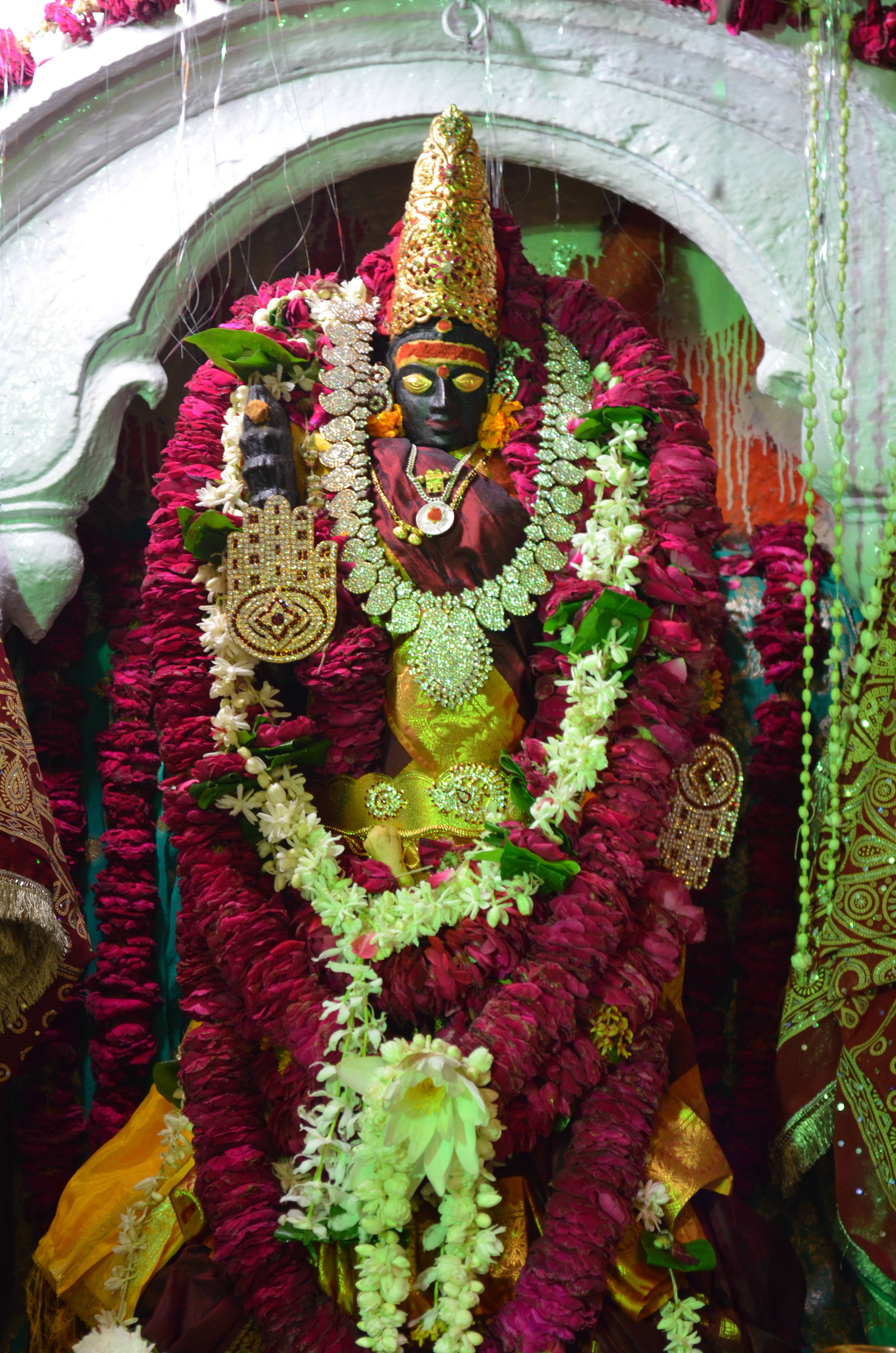
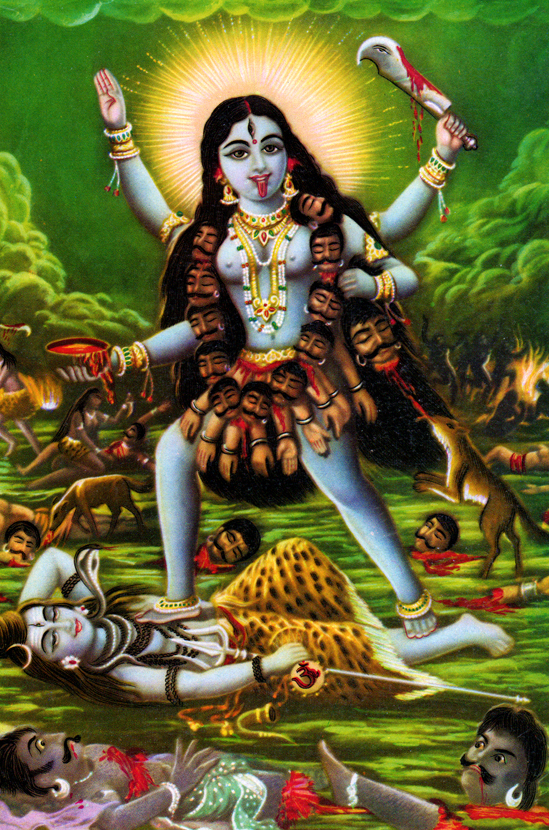
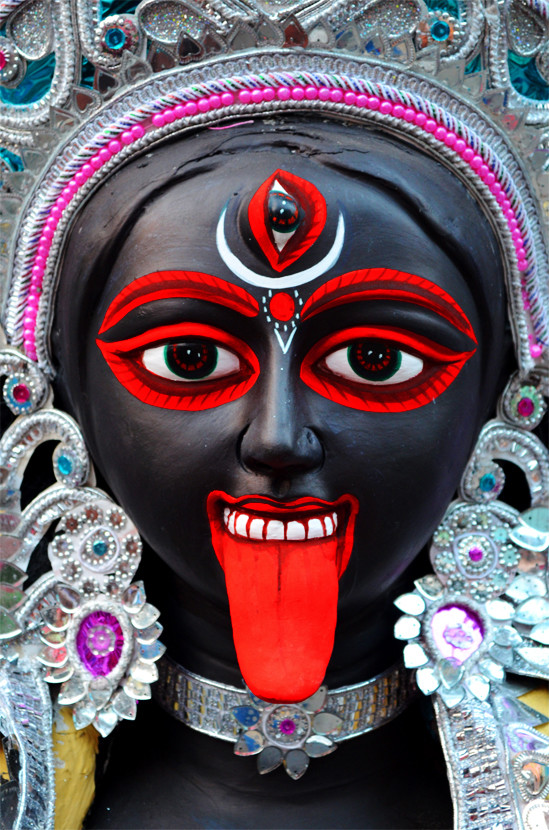
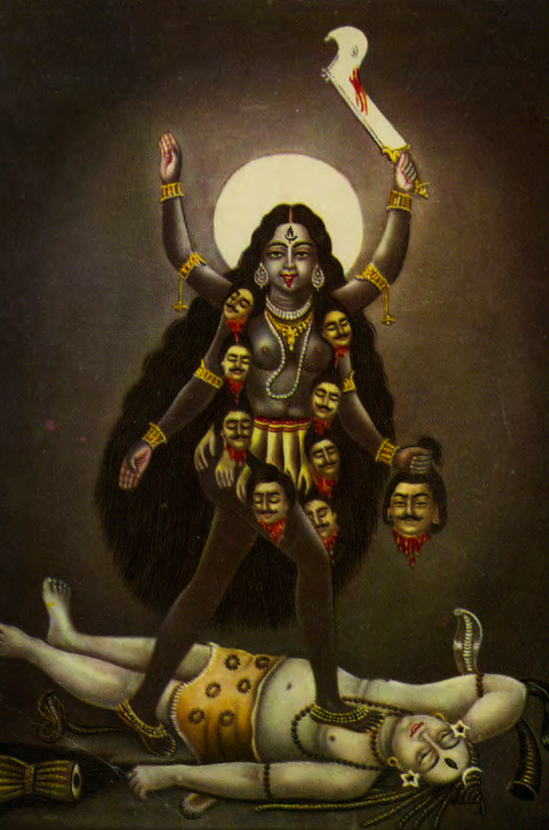
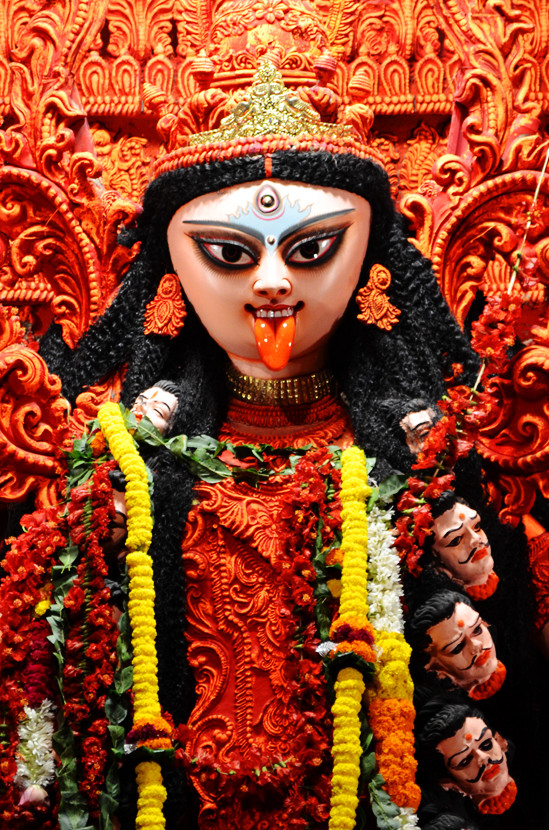
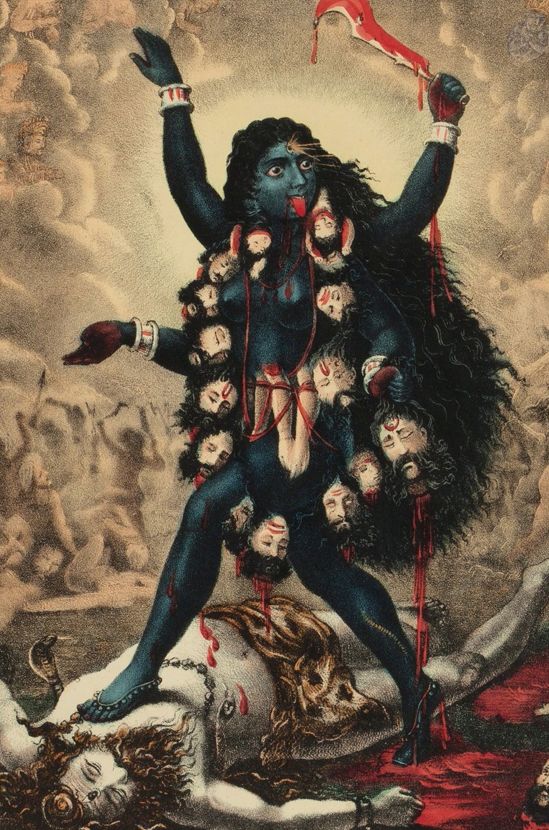
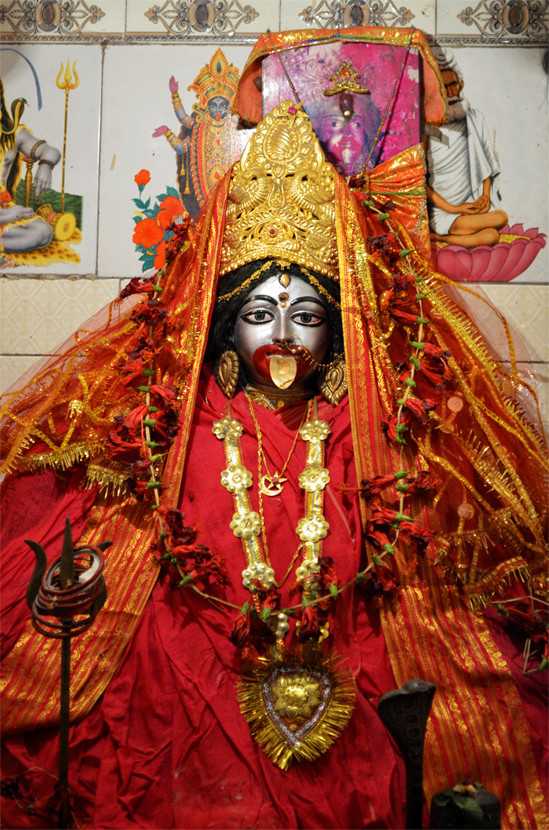
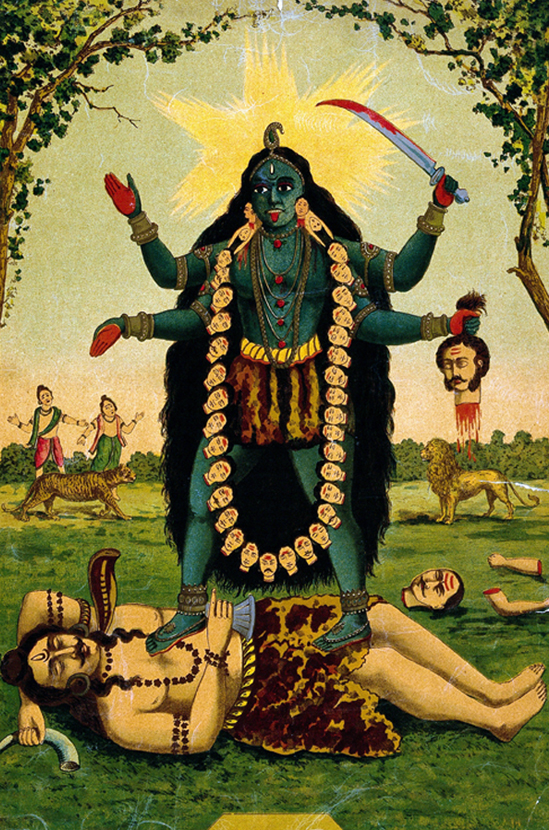
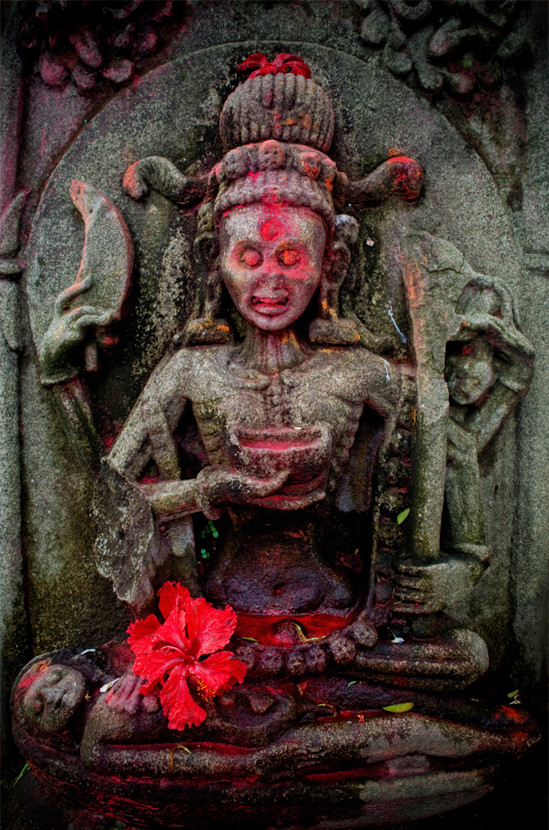
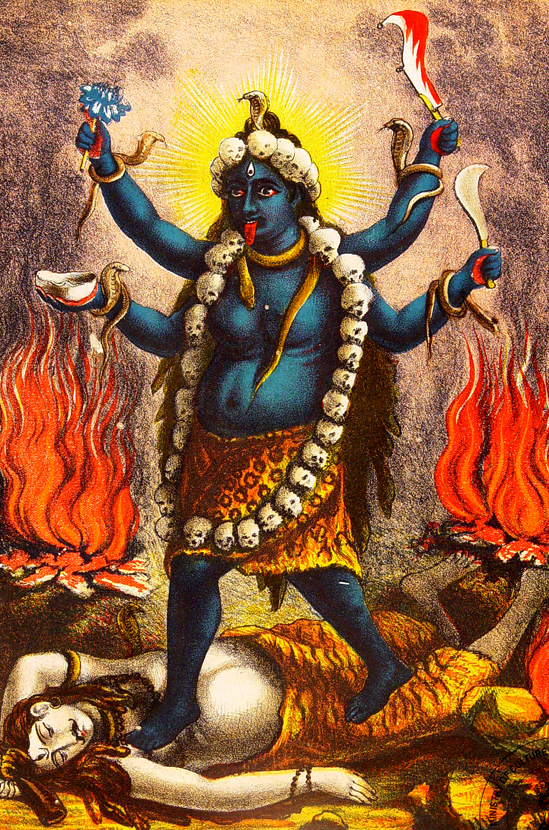
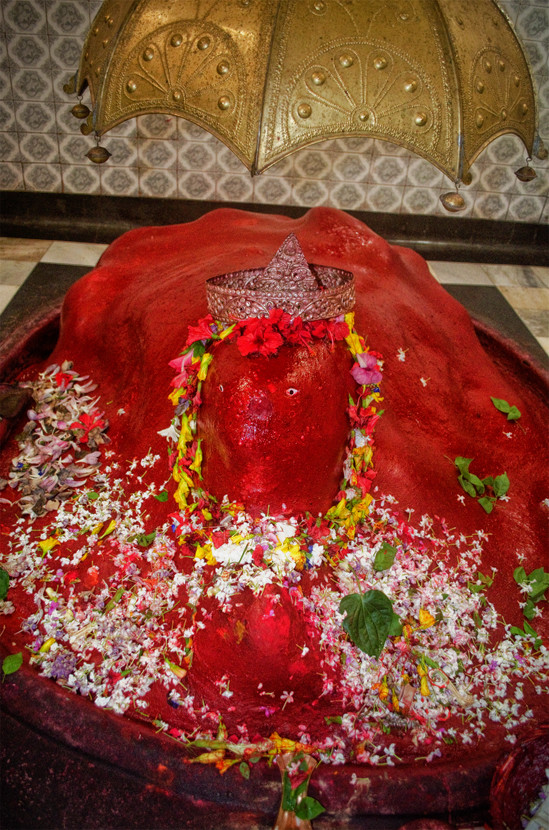
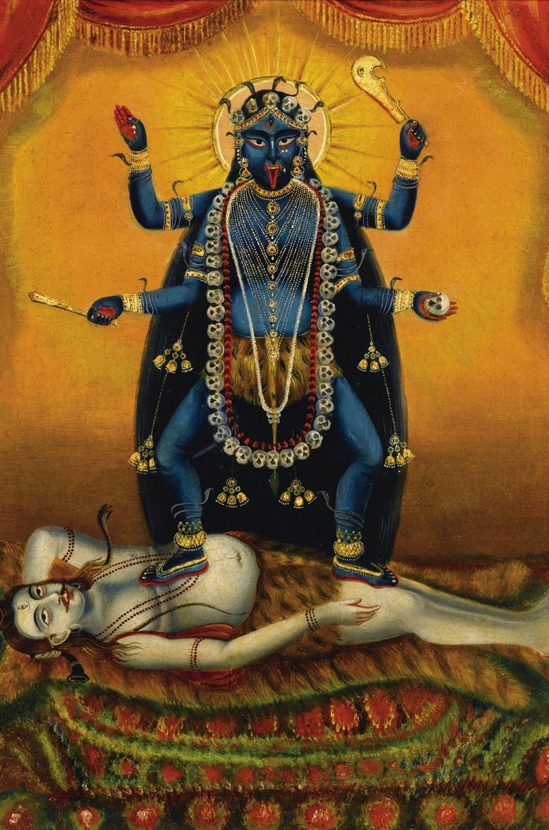
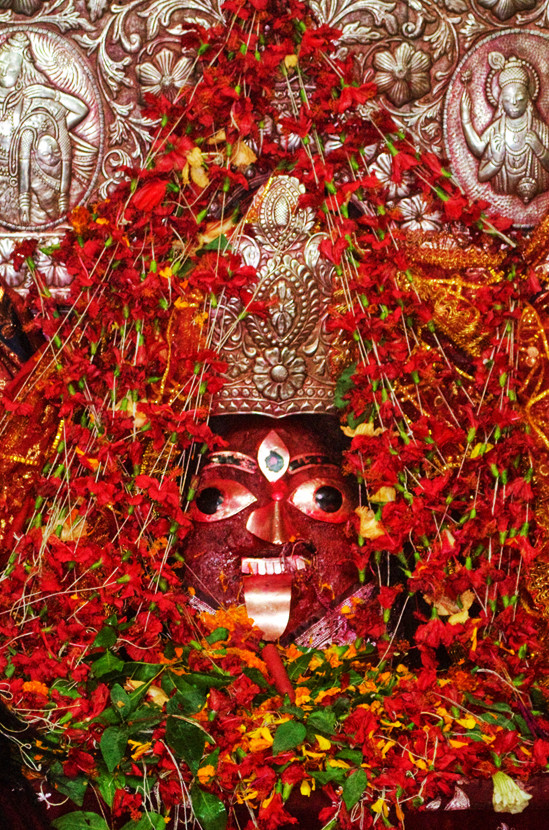
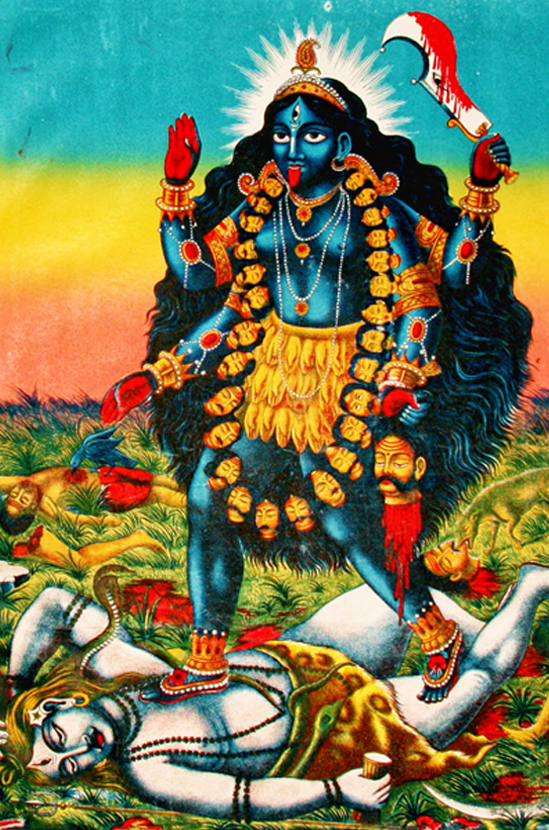
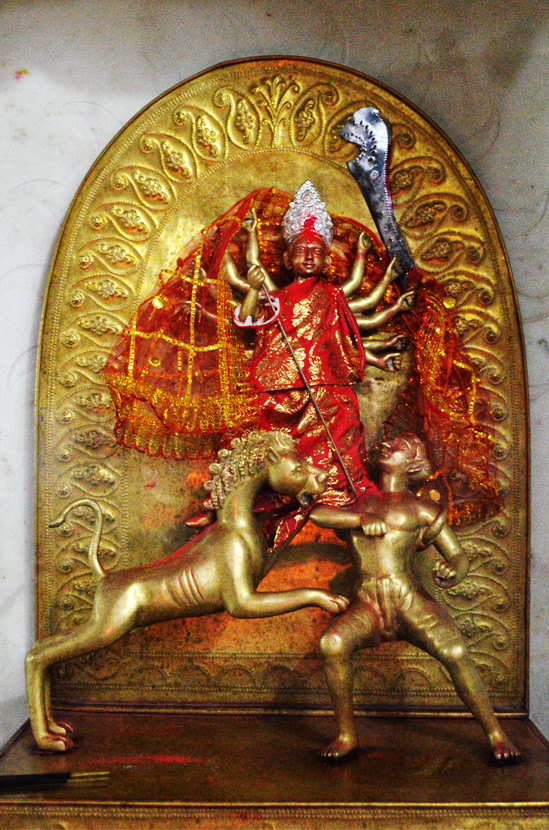
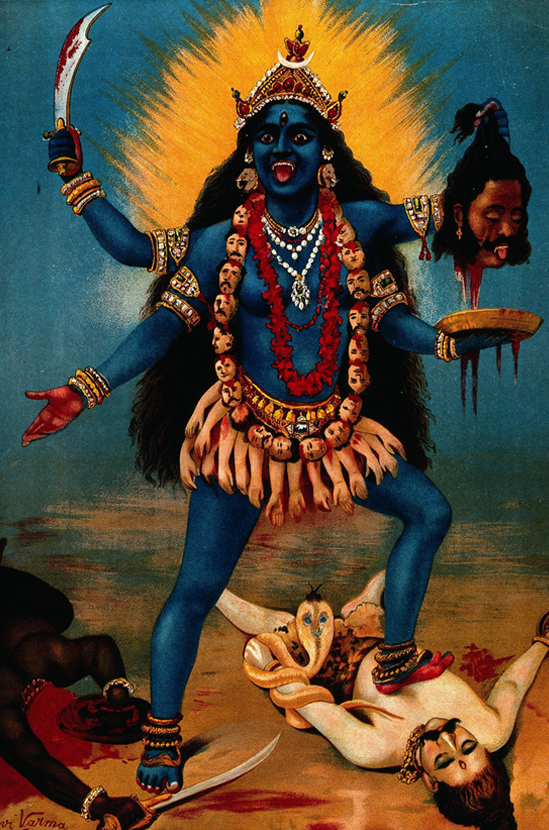
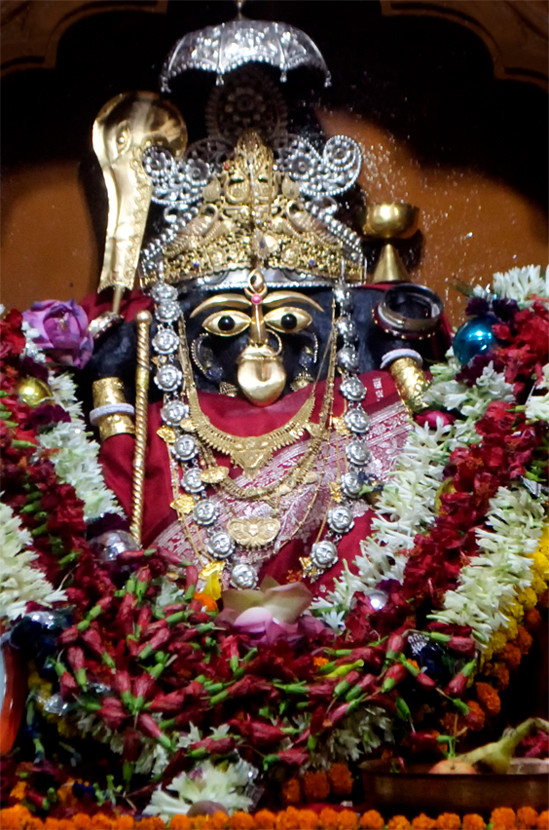
Great pictures!
Not only great pictures but also good commentary and description.
Nice pictures and good commentary. Thank you for sharing this with us. Much appreciate your efforts.
Thx for this great information that you are sharing with us!!!
Jai Maa Vishalakshi Manikanika…..
Amazing!
Treść bliska każdemu, rekomenduję literaturę
my web site following (Ellen)
Jodhpur is a city in the Thar Desert of the northwest Indian state of Rajasthan. Its 15th-century Mehrangarh Fort is a former palace that’s now a museum, displaying weapons, paintings and elaborate royal palanquins (sedan chairs). Set on on a rocky outcrop, the fort overlooks the walled city, where many buildings are painted the city’s iconic shade of blue.
Jodhpur
Hi William,
Have you noticed that the scripture records and maintained of temples are better as we come down south of India than north of India? Possibly due to Mughal interference. It pained me to see great gods receiving less sastric love. The agamas give us the exact treatment of the divine abodes.